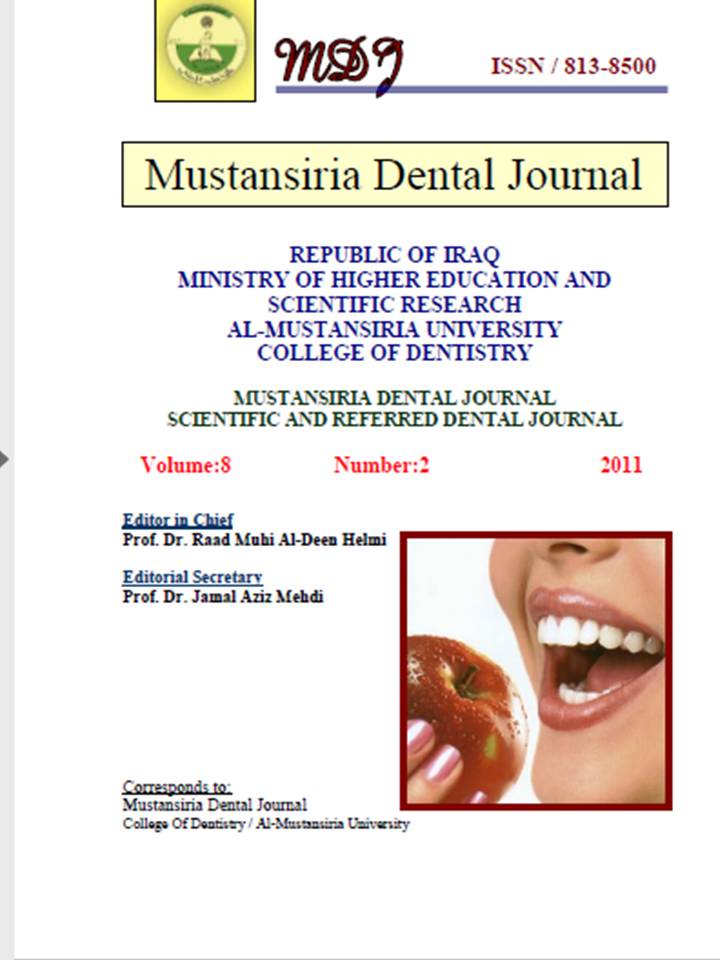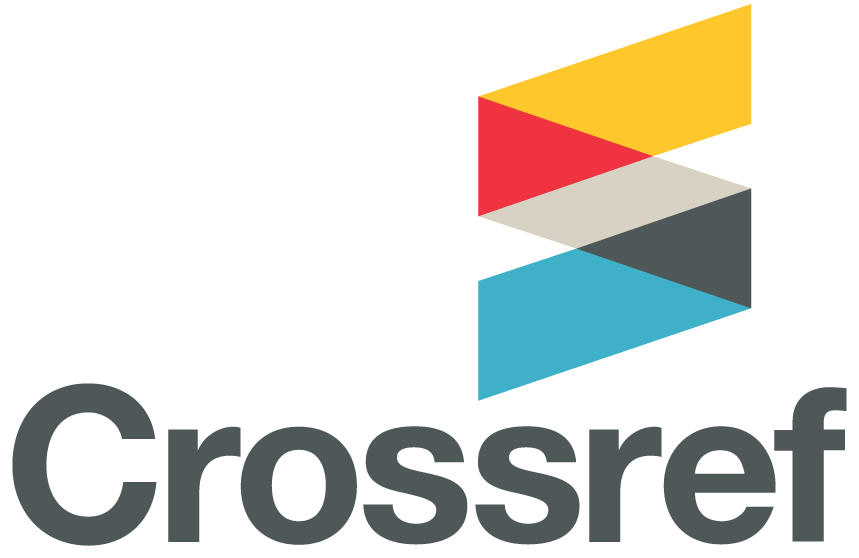The Effect of Chemomechanical Caries Removal and Different Bonding Systems on Shear Bond Strength of Carious Dentin (In Vitro Study)
DOI:
https://doi.org/10.32828/mdj.v8i2.314Keywords:
Keywords: Carisolv, shear bond strength, dental adhesives.Abstract
The purpose of this in vitro study was to determine whether shear bond strength
(SBS) to chemomechanically excavated dentine by Carisolv (CS) differed from the
SBS after conventional caries removal by bur (CB), with the use of the following
adhesive systems: [Total-etch (TE), etch and Compobond1, etch, prime and bonding
resin]; [Self-etch (SE), Xeno v, one component self-etching dental adhesive] and [Noetch
(NE), Compobond1, prime& bond only]. Fifty human molars with occlusal caries
were used to prepare dentin samples which were assigned to 5 groups: group I and III
the prepared samples treated by CB and CS respectively then with TE, group II and
IV the prepared samples treated by CB and CS respectively then with SE, while in
group V the prepared samples treated by CS and then with NE. For each sample there
was light cured composite core build up. After water storage, the samples were tested
in a single-plane shear test assembly. The results demonstrated that there were
statistical significant differences with in the mode of caries removal groups and also
there were statistical significant differences between the bonding systems which affect
SBS of carious dentin at p < 0.01, with in favor of the TE over SE. The present data
demonstrate that with the use of CS on (carious dentin, there was either increase or
decrease in bond strength in relation with different bonding systems.

Downloads
Published
Issue
Section
License
The Journal of Mustansiria Dental Journal is an open-access journal that all contents are free of charge. Articles of this journal are licensed under the terms of the Creative Commons Attribution International Public License CC-BY 4.0 (https://creativecommons.org/licenses/by/4.0/legalcode) that licensees are unrestrictly allowed to search, download, share, distribute, print, or link to the full texts of the articles, crawl them for indexing and reproduce any medium of the articles provided that they give the author(s) proper credits (citation). The journal allows the author(s) to retain the copyright of their published article.
Creative Commons-Attribution (BY)








